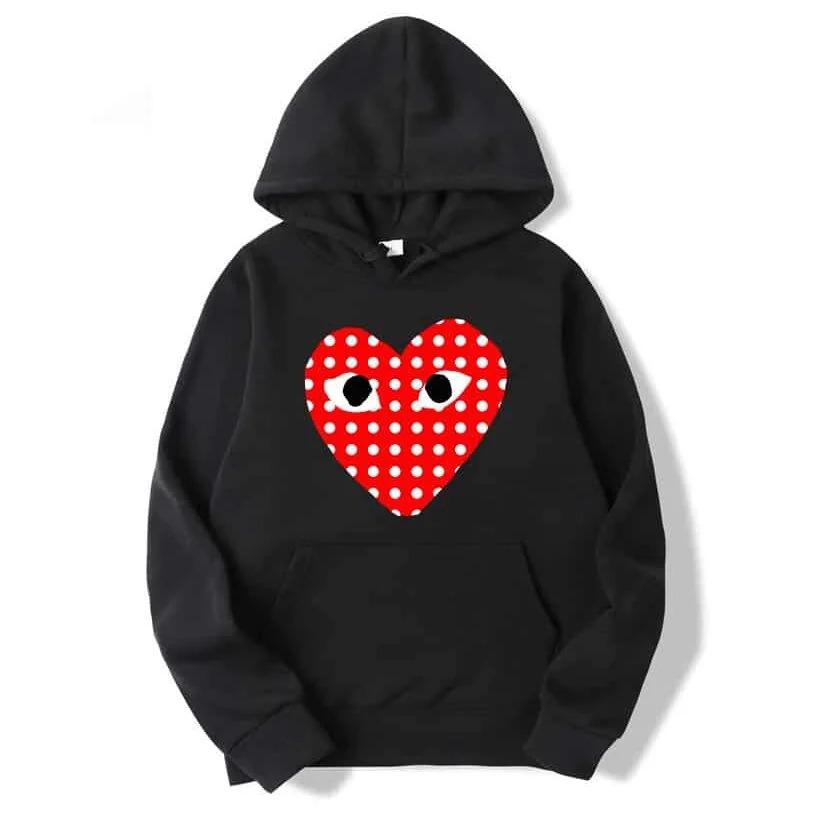In the landscape of contemporary fashion, few brands have challenged conventions as radically as Comme des Garcons. Founded in Tokyo in 1969 by Rei Kawakubo, the label has spent over five decades dismantling traditional notions of beauty, gender, and design. Unlike most fashion houses that follow trends, Comme des Garçons creates its own universe—one where clothing is not just worn but experienced as conceptual art. This essay explores how Kawakubo’s visionary approach has reshaped fashion, blending Eastern and Western aesthetics while defying commercial expectations.
The Unconventional Origins of a Fashion Rebel
Rei Kawakubo never intended to become a designer. With a background in fine arts and literature, she entered fashion almost by accident, bringing an outsider’s perspective that would revolutionize the industry. Her early designs—often oversized, asymmetrical, and deliberately "unfinished"—stood in stark contrast to the polished glamour of 1970s Parisian fashion.
When Comme des Garçons debuted in Paris in 1981, critics were baffled. The collection, dominated by black, deconstructed garments, was described as "post-atomic" and "distressed." Yet, this rejection of conventional beauty became Kawakubo’s signature. She didn’t just design clothes; she crafted wearable philosophy, questioning why fashion had to be pretty, flattering, or even functional.
Breaking the Rules: Key Themes in Comme des Garçons’ Aesthetic
-
The Beauty of Imperfection
-
Kawakubo embraces raw edges, exposed seams, and intentional "flaws."
-
Example: The Spring/Summer 1997 "Body Meets Dress" collection featured padded lumps, distorting the body’s natural shape.
-
-
Gender as a Construct
-
Comme des Garçons blurs masculine and feminine codes, favoring unisex silhouettes.
-
The Homme Plus menswear line applies avant-garde tailoring to redefine masculinity.
-
-
Fashion as Conceptual Art
-
Kawakubo treats each collection as an artistic statement, not just a commercial product.
-
The 2014 "Not Making Clothing" collection featured abstract shapes that barely resembled garments.
-
-
The Power of Monochrome & Disruption
-
Early collections were almost entirely black; later, Kawakubo introduced bold graphics and surreal prints.
-
Beyond the Runway: Cultural Impact & Collaborations
Comme des Garçons’ influence extends far beyond high fashion:
-
Streetwear Phenomenon – The PLAY line, with its iconic heart logo, became a global staple.
-
Game-Changing Collaborations – Partnerships with Nike, Supreme, and Louis Vuitton bridged avant-garde and mainstream fashion.
-
Retail Reinvention – Dover Street Market, Kawakubo’s concept store, redefined luxury shopping with its gallery-like spaces.
Legacy: The Designer Who Changed Fashion Forever
In 2017, the Met’s "Art of the In-Between" exhibition cemented Kawakubo’s status as one of history’s most important designers. Her work has inspired:
-
Martin Margiela (deconstruction)
-
Rick Owens (dark, sculptural aesthetics)
-
Demna Gvasalia (Balenciaga’s anti-fashion approach)
Conclusion: A Never-Ending Revolution
Comme des Garçons is more than a brand—it’s a continuous rebellion against fashion’s norms. Rei Kawakubo proves that clothing can be radical, intellectual, and deeply personal. As she once said: "I want to make people think." In a world obsessed with trends, Comme des Garçons remains timeless precisely because it refuses to follow them.
